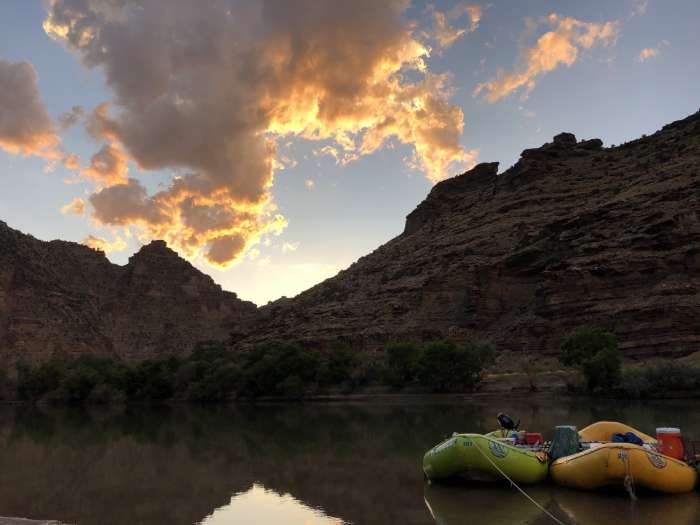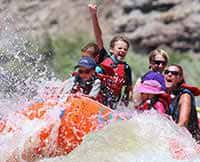5 Things I Wish I Knew Before my First River Trip
One of the greatest ironies of my life is this: my parents met while working as river guides, and I had NEVER rafted before training to be a river guide at 20 years old. Needless to say, I had a lot to learn my first time! If you're embarking on your first rafting trip, take comfort in the fact that there's a first time for everything, and your guides have gone through combined years of trial and error so you don't have to! During my five years on the river, I've picked up some hacks from other guides and personal experience to make life on the raft a LOT easier.
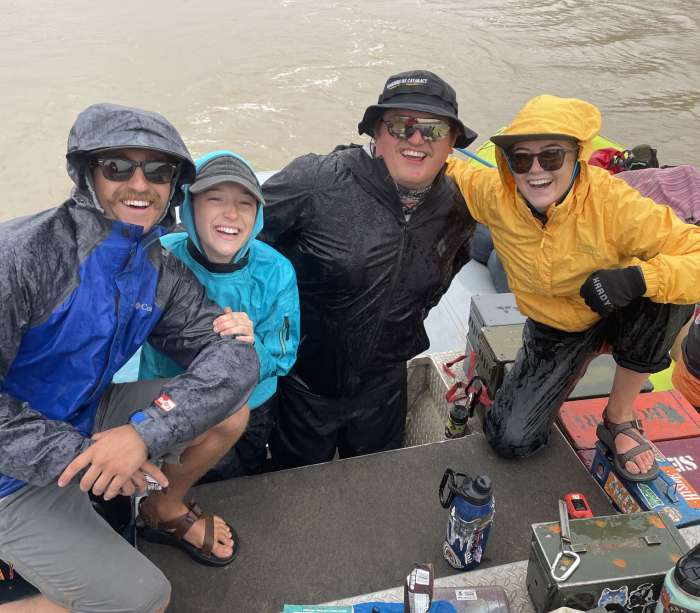
1. BRING. WET. WIPES.
This will mean the difference between sleeping crusty and feeling clean and relaxed. A nightly "wet wipe shower" focused on the face, armpits, hands, and feet will keep your skin feeling comfortable throughout the week. A tried-and-true tip from my mom's river years to minimize chances of sleeping sandy: wipe your feet down before getting in your sleeping back, coat them with a generous layer of lotion, then put on socks. You'll wake up with replenished feet ready for another day on the river.
2. Invest in good sun and rain protection
Of course, for any outdoor activity, sunscreen is a must. However, if you're like me, it's easy to forget to reapply throughout the day, so it's good to take extra precautions. During multi-day river trips, you'll notice most river guides wearing long sleeves, hats, sunglasses, and sometimes even long pants. Sun protection is key in the desert, and most pre-sunscreen era river guides get melanomas removed regularly. For arm/face protection, a quick-dry sun hoodie, or "shoodie," is a favorite among guides. It's lightweight, and it can keep you cool when wet. After 2-5 days' worth of exposure to the elements, you might experience the "elephant skin" or heat rash. This is characterized by excessively dry patches of skin due to dust or heat. I commonly get it on the tops of my legs from sitting on the raft all day. A great prevention tool: a SARONG. Like the ones you wear on a beach vacation. No matter your gender, make a fashion statement with a sarong skirt while protecting your legs from the sun! Many guides will tell you it's a lifesaver. Lastly, sunglasses and hats are essential. Bring at least two of each in case you lose one --- which, on a river trip, is as common as a bad guide joke.
As well as sun protection, always have at least a rain jacket accessible. In the desert, rain can appear out of seemingly nowhere, and the last thing you want is to be digging through a pile of camp bags for a rain jacket while getting drenched. PRO TIP: if you are taking a trip down Cataract Canyon, you will DEFINITELY want rain gear accessible for the stretch after the last rapid entering Lake Powell (consult the guides during the trip if you're unsure). From personal experience, it will make a world of difference for keeping you warm and dry from the splashes kicked up by the wind against the forward force of the boat. Even if it's 115 degrees Fahrenheit, you'll be left shivering without rain gear during this section.
I've included pictures of rain gear and good shoodie examples.
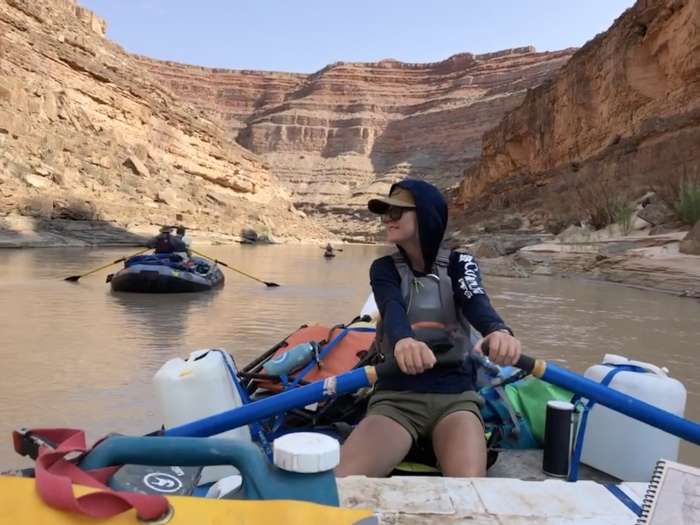
3. DRINK WATER, DRINK WATER, DRINK WATER
"Feeling sick? Drink water. Depressed or tired? Drink water. Is the world literally ending? Drink water" - my mother's response to all problems. I cannot stress this enough. Even while spending a cool, cloudy day on the boat, the desert air is constantly sucking moisture out of your skin. You may hear a bad guide joke about dehydration causing grumpiness (trust me, you'll hear it), and it's true! Monitor yourself, and if you feel yourself getting slightly more annoyed than usual, take some big gulps of liquid. If more serious dehydration sets in, you may experience symptoms such as extreme physical weakness and swollen ankles (this happened to me on my first trip down the Grand Canyon). To prevent this, balance your water intake with electrolytes. Luckily, Western river trips include special lemonade packed with electrolytes along with the normal daily water supply. For a less sugary option, electrolyte hydration tablets can be found at a grocery store and dissolved in normal water. Their results are amazing; you will feel twice as hydrated as before.
4. Be prepared for the river schedule
For the first day or two of the river trip, it can be tough adjusting to the daily schedule. Guides like to get on the water as early as possible to beat the afternoon wind and ensure a good camp spot for the next night, so the expected morning coffee call can be as early as 6:00 am. There is a lot of camp set-up and take-down to consider as well, creating a repeated schedule that goes something like: get to camp, set up tent and cots, free time, dinner, sleep, get up, breakfast, take down tent and cots, pack up stuff, get on the water. Apart from the essential tasks, there is plenty of time for games, chatting, bathing, and relaxing in between. As the trip progresses, a natural rhythm develops to the point where it becomes a normal part of the day. I was not a morning person before my first river trip, and I'm still not a morning person. But like many others, I am a creature of routine, and the river routine is fairly consistent.
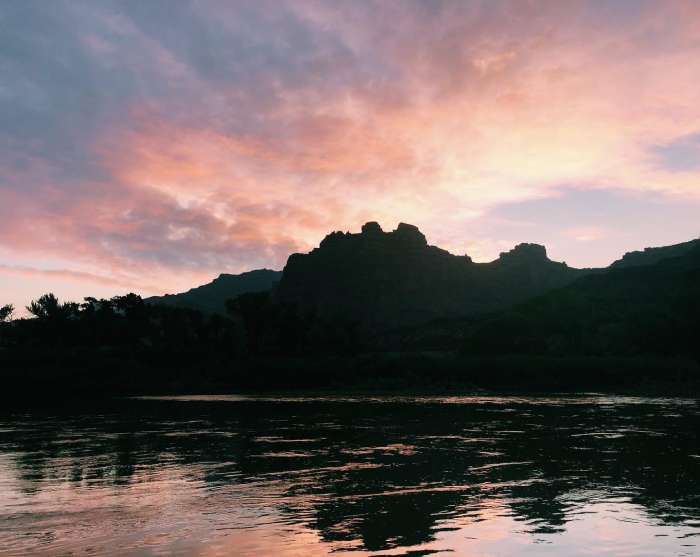
5. Come with an open mind
No matter what you or your guides prepare for, there will ALWAYS be something unexpected on a river trip. It can come in the form of weather, fluctuating water levels, equipment failure, injuries, or just freak occurrences. For example, big winds can be a factor in the flow of a trip schedule. The biggest thing to realize is that any time you're in the outdoors for an extended time, you are always at the mercy of Mother Nature. The best anyone can do is come prepared and work with what you have. If you're someone who has little or no experience on a rafting trip, my best advice is this: come with an open mind. Be willing to learn from the raw, untamed beauty of the desert. Don't be afraid to reconnect with the same elements that humbled the first civilizations of our desert ancestors. For me, the biggest thing to remember is that whatever I get out of a trip comes from what I bring to it. Most of all, be ready to leave the river with an unforgettable experience!
